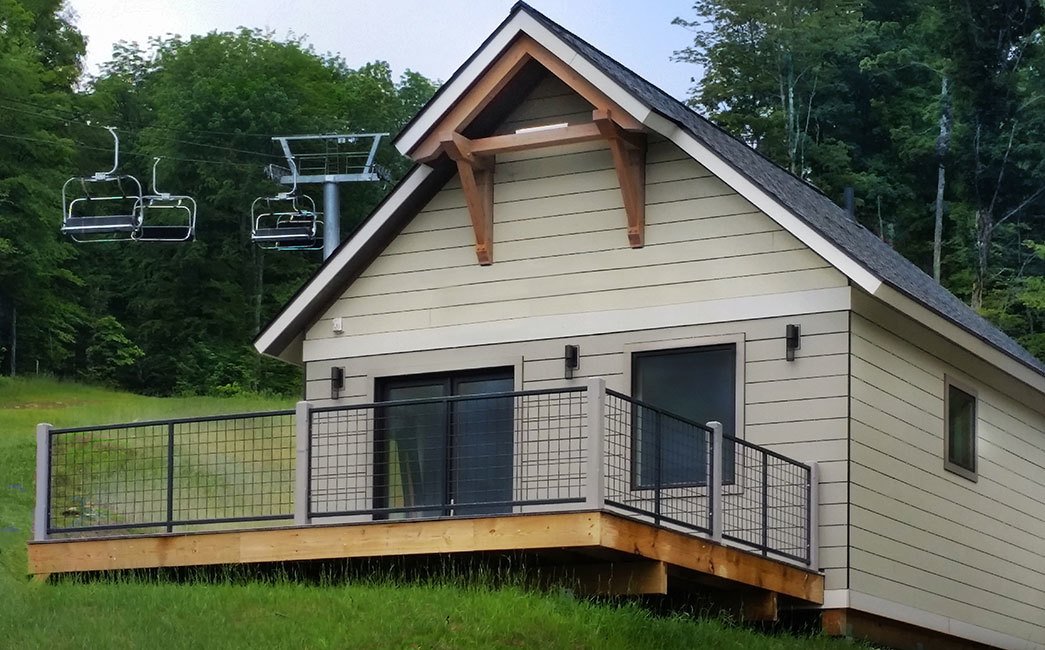
Governor Charlie Baker, a Republican who once campaigned against raising taxes, unveiled a proposal Friday to hike the tax on Massachusetts real estate transfers by 50 percent, and funnel the more than $1 billion it could generate in the next decade into steeling cities and towns against the effects of climate change.
The plan, which Baker intends to include in his state budget proposal on Wednesday, marks one of his most high-profile bids to address climate resiliency as he begins his second term.
But it’s also expected to face heavy resistance within real estate circles, where trade groups warn a tax hike could exacerbate the region’s already steep housing costs.
Baker’s proposed tax increase would add nearly $1,200 in taxes to the sale of a $500,000 home, with those costs paid by the seller.Get Metro Headlines in your inbox:The 10 top local news stories from metro Boston and around New England delivered daily.Sign Up
Baker said the increase to the so-called deeds excise rate could generate anywhere from $130 million to $150 million annually toward a Global Warming Solutions Trust Fund, which cities and towns could then tap through grants, loans, and other avenues for local projects. That could include modernizing public buildings, fortifying sea walls, or improving drainage and flood control methods, depending on a city or town’s needs.
“This is an excise tax that’s basically about property. And the proposal we’re making here is to protect property,” Baker told reporters after unveiling the contours of the plan to hundreds of local officials at the Massachusetts Municipal Association’s annual meeting.
“We think in the long run, the cost benefit on this one is a good deal for Massachusetts residents,” Baker said.
The tax increase, which would need legislative approval, could mean hundreds, if not thousands, more dollars borne by those unloading their homes.
Under current law, a home seller in most parts of the state pays $4.56 in transfer taxes per $1,000 of a purchase price. That means for a $500,000 home sale, a seller pays a $2,280 tax bill. If Baker’s proposal passes, the transfer tax rate would jump to $6.84 per $1,000, meaning for the same $500,000 sale, the tax bill balloons to $3,420.
On Cape Cod, where the excise tax is lower than the rest of the state, the increase is actually more dramatic under Baker’s proposal. The $3.42 per $1,000 of a purchase price home sellers currently pay would jump by 67 percent to $5.70.
As a candidate in 2014, Baker continually opposed tax and fee increases, later allowing that if the state offered a new service and attached a fee to it, he didn’t think he would be breaking his commitment. En route to winning reelection last fall, he reiterated that he is against broad-based tax increases for the sake of “balancing the budget.”
During four-plus years in office, he has signed a number of new fees and taxes into law, including an assessment to help cover the cost of the state’s Medicaid program and an estimated $800 million payroll tax, split between employers and employees, that goes into effect in July to pay for a new paid family and medical leave program. Baker also signed off on a new $2 surcharge on car rental transactions to raise up to $10 million toward training for local police.
Baker defended his pursuit of the tax hike in the new climate change proposal. “There’s no program in Massachusetts that’s going to put a billion dollars on the table to put the kind of resiliency programming in place that we’re going to need to deal with the intensity and the frequency of storms,” he said.
His administration, however, also noted that it has already invested $600 million in programs targeting the effects of climate change.
The proposal is the second major climate-change-focused initiative Baker has touted since winning reelection. Last month, Massachusetts and eight other states announced a landmark agreement to create a system to impose regionwide limits on transportation emissions, the nation’s largest source of carbon pollution.
Within hours, the plan was drawing resistance from the real estate industry. Tamara Small, chief executive of NAIOP Massachusetts, the powerful trade group for commercial real estate, questioned tying the fund to property sales.
“When we have a market downturn, which I think is not far down the road . . . that could affect the amount of money that could be raised,” Small said. “When you’re talking about a 50 percent increase, there’s no doubt that for someone who is trying to sell their home, that’s going to increase prices. That’s going to have an impact.”
The Massachusetts Association of Realtors, which opposes the increase, said efforts to support climate resiliency shouldn’t target only those looking to sell property, said Justin Davidson, the group’s general counsel.
“This proposal would quite frankly increase the cost of housing in Massachusetts,” he said. “We’ll be reaching out to legislators to let them know about our position.”
Baker is likely to have powerful support, too. The plan received a “very positive response” from local officials at their annual meeting, according to Geoffrey Beckwith, the Massachusetts Municipal Association’s executive director, who called it a “common sense funding solution.”
“There’s a direct connection between what cities and towns have to do, and the proposal the governor made,” Beckwith said.
Environmental groups, who have been critical of Baker before, offered cautious praise Friday for this proposal, noting they’re still waiting to see all of the details.
“I think it’s a great signal that he intends to take climate change and climate resilience and adaptation seriously,” said Elizabeth Turnbull Henry, president of the Environmental League of Massachusetts. “Massachusetts has 1,500 miles of coastline. The time is now to be thinking about how we’re going to pay for the investments that we need to protect ourselves.”
Bradley Campbell, president of the Conservation Law Foundation, said he was encouraged by Baker’s plan, but called the money it could raise “modest” compared to the projected need.
“Ultimately, I think there will be a need to look at multiple revenue sources to assure that the cost burden of climate risk is allocated in a fair and equitable way,” he said. “This proposal provides a solid start to that dialogue.”
read more…































 Village Halloween Parade. Photo: Joe Buglewicz
Village Halloween Parade. Photo: Joe Buglewicz NYC Fashion Week. Photo: Marley White
NYC Fashion Week. Photo: Marley White NYC Marathon. Photo: Julienne Schaer
NYC Marathon. Photo: Julienne Schaer New York Giants. Photo: Evan Pinkos
New York Giants. Photo: Evan Pinkos “Green Coca-Cola Bottles” (1962), Andy Warhol. Courtesy, Whitney Museum
“Green Coca-Cola Bottles” (1962), Andy Warhol. Courtesy, Whitney Museum Courtesy, Brooklyn Comedy Festival
Courtesy, Brooklyn Comedy Festival Coney Island Film Festival. Photo: Norman Blake
Coney Island Film Festival. Photo: Norman Blake_900_600_70.jpg) Oklahoma! Photo: Brigitte Lacombe
Oklahoma! Photo: Brigitte Lacombe